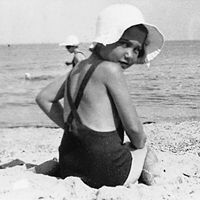
Board members, senior staff and other supporters of USC Shoah Foundation – The Institute for Visual History and Education are traveling throughout Hungary and Poland this week on the Institute’s mission to Eastern Europe.
Board members, senior staff and other supporters of USC Shoah Foundation – The Institute for Visual History and Education are traveling throughout Hungary and Poland this week on the Institute’s mission to Eastern Europe.
Eötvös Loránd University in Budapest is now the second Visual History Archive access site in Hungary and the 45th in the world.
A budapesti Eötvös Loránd Tudományegyetem Magyarországon a második és a világon a 45. hozzáférési pont, ahonnan a Vizuális Történelmi Archívum összes interjúja elérhető. Az első hozzáférési pont 2oo9-ben nyílt meg a Közép-európai Egyetemen (CEU).
Three years after Charles University’s Malach Center gained access to the Visual History Archive, its importance as a destination for testimony-based research, educational activities and discourse on the Holocaust continues to grow.
The Institute has updated its Visual History Archive (VHA), which now integrates Google Maps for a new way to search the testimonies.
Eva Schloss, stepsister and childhood friend of Anne Frank, spoke to a capacity-crowd at USC on January 22, in an event sponsored by Chabad @ USC and USC Shoah Foundation – The Institute for Visual History and Education.
Representatives from more than 30 Holocaust museums and centers in the United States and Canada came to Los Angeles this week for the 2013 Association of Holocaust Organizations (AHO) Winter Seminar, hosted for the first time by USC Shoah Foundation – The Institute for Visual History and Education.
Karen Jungblut, USC Shoah Foundation director of research and documentation, participated in the “Digital Testimonies on War and Trauma” conference in June. Held at Erasmus University Rotterdam in the Netherlands, the symposium brought together scholars from all over the world to address the use and impact of digitized narrative collections in relating the horrors of warfare.